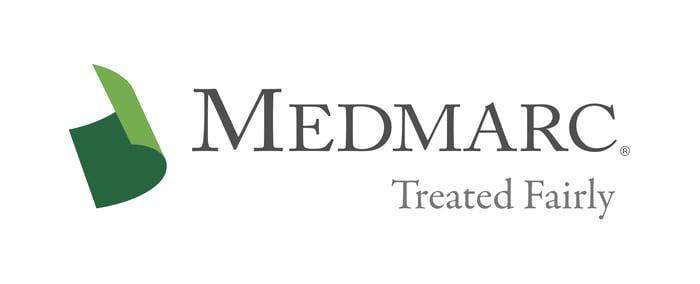Controlling Your Supply Chain
Upon investigating the facilities of SPL, the FDA discovered egregious deficiencies in its quality system, including inadequate methods of testing and unsuitable supply chain management. The fall-out from this contamination crisis included a recall of all SPL-sourced heparin causing a worldwide heparin shortage and huge expenses to Baxter and other manufacturers, harsh penalties from the FDA, and more than one thousand lawsuits.
What Went Wrong?
In the aftermath of the heparin crisis, many shortcomings that allowed the contamination to occur became clear. First, there was lack of government oversight. By its own regulations, the FDA was supposed to be regularly inspecting pharmaceutical plants, in the U.S. and abroad, but the Agency had the resources to inspect only a nominal amount of plants overseas. The lack of FDA oversight abroad was compounded by the limited role of Chinese regulators in auditing producers of raw materials for medical and pharmaceutical products. The combination of limited regulatory oversight from China and the FDA was allegedly known to Baxter and other manufacturers, and should have translated into a more active role on the part of these American manufacturers in auditing and evaluating its supply chain.
There are significant differences between the requirements for medical device manufacturers and those producing pharmaceuticals. Interestingly, purchasing controls prescribed for medical device manufacturers in 21 CFR § 820.50 are fairly comprehensive, requiring manufacturers to, among other things, maintain quality requirements for suppliers, define the type and extent of suppliers' control over the product, and select suppliers based upon their ability to meet specified quality requirements. In contrast, these requirements are not mirrored in the current Good Manufacturing Processes (cGMPs) for drug manufacturers. The absence of the supplier controls required for device manufacturers is premised on the fact that drug components are chemical, and therefore can and should be reliably tested. Instead of assuring adequate control over their suppliers, the cGMPs for drug companies places a greater emphasis on in-process testing of raw material components of drugs. The Heparin crises illuminated a flaw in this scheme.
Lessons Learned
In the wake of the Heparin crisis, the U.S. Pharmacopeial Convention (USP) standard on heparin was expanded to include a new requirement that heparin now be tested for the particular contaminant that was the cause of the crisis. Although that requirement addresses the heparin issue specifically, it does not provide a mechanism by which future contaminations can be avoided in other pharmaceuticals (or even potential in heparin).
Thus, manufacturers who may be in strict compliance with the regulations and testing monographs, who do not undertake additional steps to ensure the integrity of their supply chains are at risk for a heparin-like contamination or similar supply chain problem. In addition to heeding the FDA mandated good manufacturing practices, there are several steps that drug and medical device manufacturers can take to prevent contamination and supply chain failures. First, a manufacturer should identify its supply chain and each member therein, and then qualify those suppliers. Secondly, and perhaps most importantly, manufacturers should carefully craft and stringently enforce quality agreements with their suppliers. While well-crafted quality agreements would lead to compliance with 21 CFR § 820.50 for medical device manufacturers, drug manufacturers would be wise to voluntarily adopt these quality agreement standards as well.1 Included in these agreements should be: (1) the requirement that manufacturers’ immediate suppliers notify them of any change in their own vendor/supply chain sources; (2) indemnity/hold harmless language to protect manufacturers from mistakes made up the supply chain; and (3) a mandate that suppliers all the way up the supply chain carry products liability insurance (which protects vendors and manufacturers down the supply chain in conjunction with the indemnity obligation).
Despite the Supreme Court’s rulings, a couple of courts have not dismissed state-law based warning claims against generic manufacturers. Motion practice in those matters is ongoing, and it is not yet clear whether those cases also will be dismissed.
Finally, manufacturers should conduct audits of their suppliers with regularity and thoroughness, preferably on site. Though paper audits may supplement an on-site audit, or be helpful before an on-site audit can be done, there is no substitute for visiting the site. If it is a foreign supplier, an auditor that speaks the language, or a reliable (independent) translator is a must. Obtaining a right (through quality agreements) to conduct unannounced audits of suppliers can be especially effective in ascertaining the quality of suppliers’ operations.
Ensuring Supply Chain Integrity—Quick Checklist for OEMs:
-
Identify supply chain
-
Enter into quality agreements
-
Audit suppliers
-
Make certain suppliers are auditing their suppliers—all the way up the supply chain
-
Confirm/review FDA inspections of suppliers
-
Audit supplier’s insurance to make certain you are protected too
-
Secure indemnity/hold harmless language in contracts with suppliers
-
Confirm that similar language is present with supplier’s suppliers
1 In addition to aiding in the prevention of a supply chain problem, having these quality agreements in place is also beneficial to the defense position of a manufacturer should a problem occur. Having these documents demonstrates to a court that the manufacturer is serious about maintaining the integrity of its supply chain.
For additional resources contact the Marketing department
Phone: 888-633-6272
Medmarc is a member of ProAssurance Group, a family of specialty liability insurance companies. The product material is for informational purposes only. In the event any of the information presented conflicts with the terms and conditions of any policy of insurance offered from ProAssurance, its subsidiaries, and its affiliates, the terms and conditions of the actual policy will apply.
Copyright © 2024 - Medmarc
